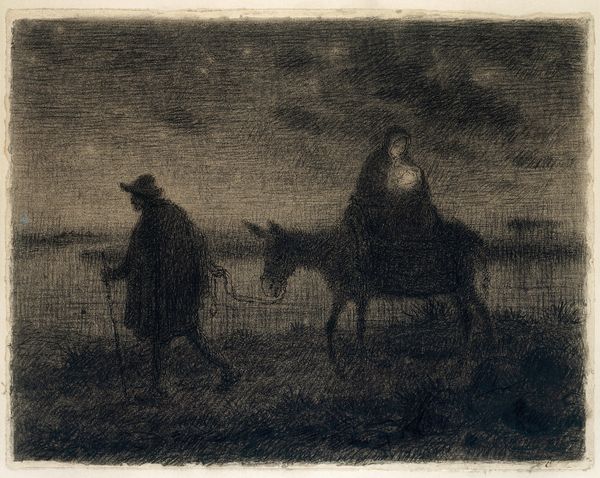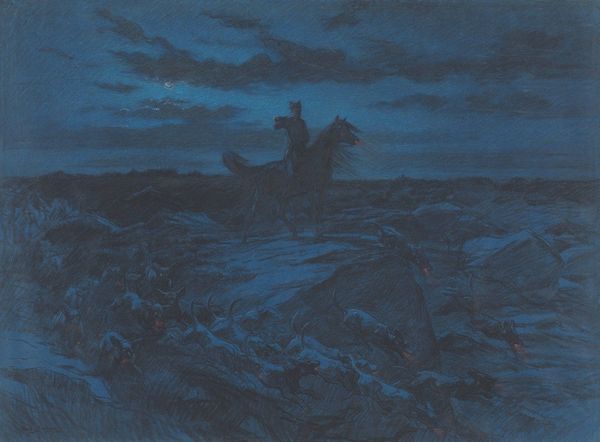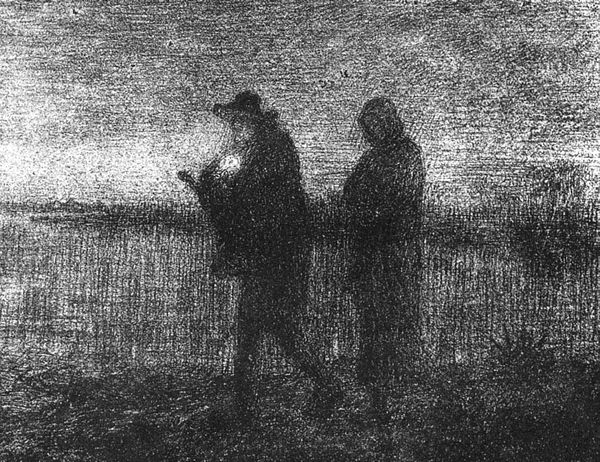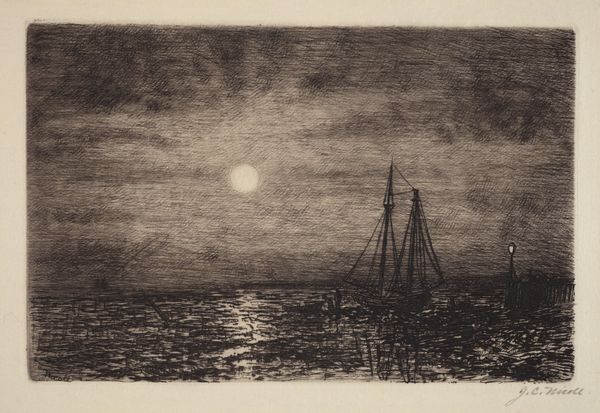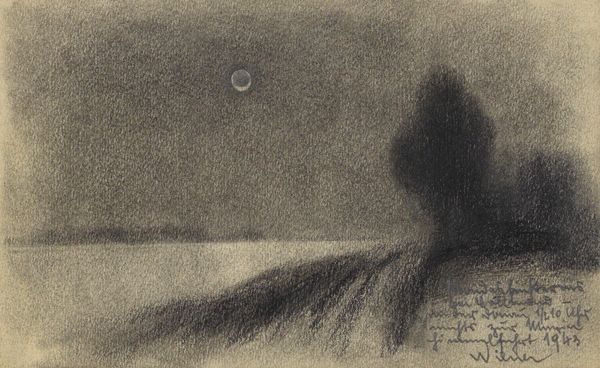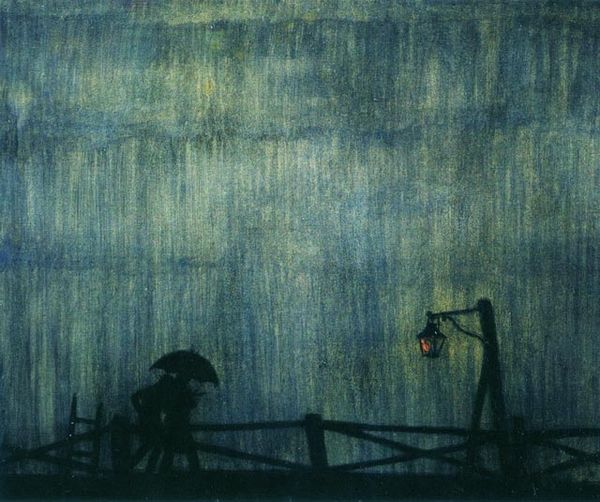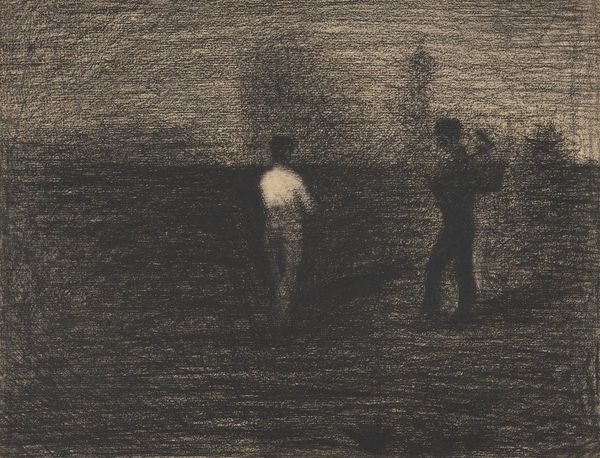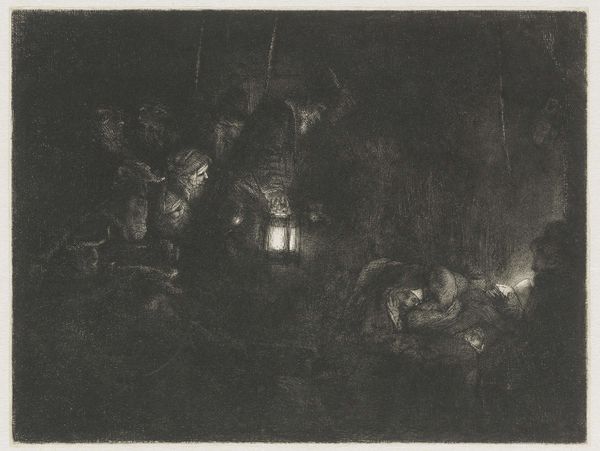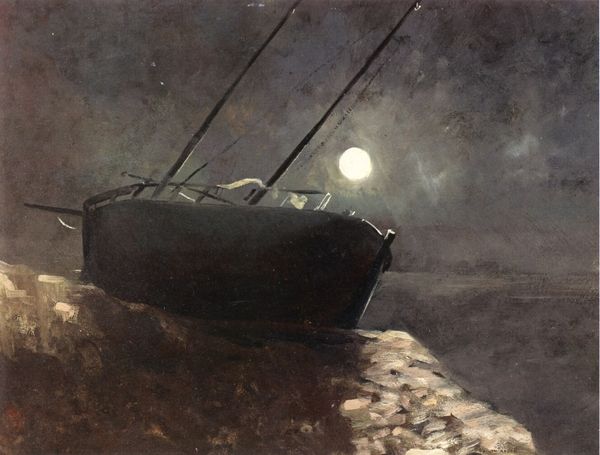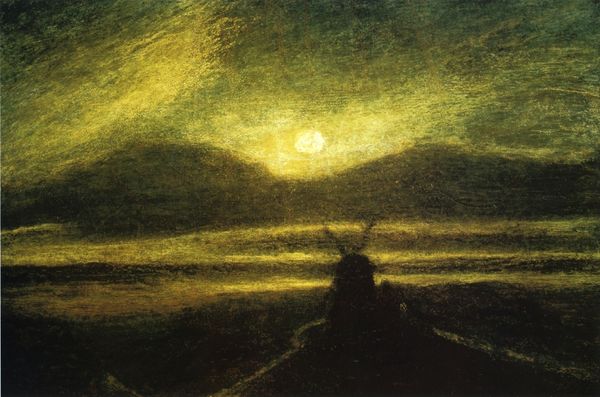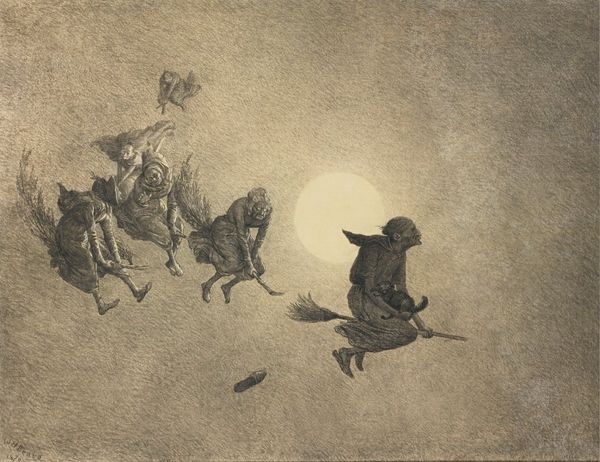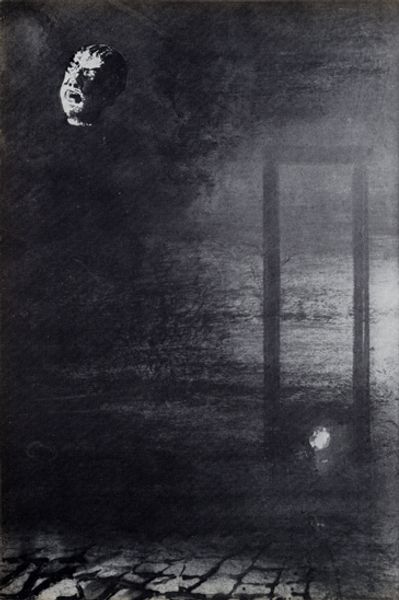
drawing, painting, pencil, charcoal
#
portrait
#
night
#
drawing
#
sky
#
painting
#
landscape
#
figuration
#
romanticism
#
cloud
#
pencil
#
water
#
genre-painting
#
charcoal
#
realism
Copyright: Public domain
Curator: Looking at this evocative work, titled "Fishermen," by Jean-François Millet, presently held at the Musée d'Orsay, I am struck by its exploration of labor and class within 19th-century French society. Editor: Yes, it's predominantly dark—a somber scene. It feels almost claustrophobic despite the implied vastness of the sea. There’s such emphasis on the palpable weight and texture of the scene. I am wondering about the making and application of charcoal here to suggest this density. Curator: Millet often chose rural laborers as subjects, viewing them as representative of a disappearing traditional way of life. In this work, created during a time of rapid industrialization, he seems to examine the grueling, often unseen work that sustained society, speaking directly to gendered experiences of class. The material conditions reflected in Millet's other works such as, “The Gleaners”, resonate here to critique power dynamics of his era. Editor: Right, because those details of production become everything. The muted color palette contributes significantly; look how it amplifies the bleakness, drawing focus to the laborious toil under the cloak of night. It definitely invites questions about who gets represented, and what kind of representation that becomes, right? Was this for the establishment? Curator: Absolutely. I would venture to say that Millet does precisely that here, particularly in his engagement with both Romanticism and Realism to address these thematic dichotomies in French life at the time. The figures are rendered with a quiet dignity, far from romanticized depictions often shown, presenting a counter narrative against established academic traditions by critiquing class. Editor: It's all very compelling, even from a craft standpoint. One can really consider the hours of labor creating the final print and the material implications of representing that in stark tonal relations. A sort of mirrored toil, yes? Curator: Yes, this work makes us reflect on the multifaceted nature of representation. Considering Millet's sociopolitical leanings—how did the artist's class background and progressive politics contribute to these choices? How can that shape and influence our understanding of gender, race, class through labor depictions today? Editor: Considering all of this—context, process, and production values—I see it afresh as a narrative of labor made all the more potent in its minimalist tones. Curator: For me, considering this artwork through contemporary perspectives is pivotal to interpreting intersectional concerns within historical frameworks. The act of analysis fosters richer discussions of socio-economic disparity and identity.
Comments
No comments
Be the first to comment and join the conversation on the ultimate creative platform.
